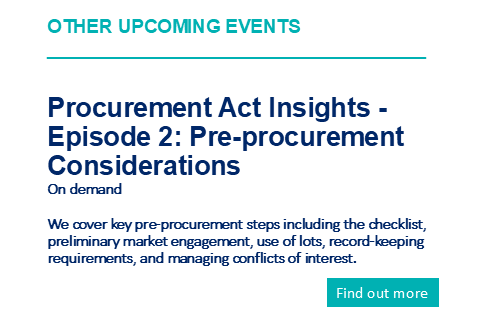- Details
Summer school on construction contracts
Laura Campbell and Rachel Murray-Smith discuss school-related construction work and how the summer holidays play a crucial role in keeping construction up-to-date.
Whilst school is out for the summer, school related construction work certainly isn’t. The summer holiday period provides the perfect opportunity for construction works to be carried out to take advantage of the empty corridors and abandoned playing fields.
Local authorities (“LAs”) have a statutory obligation to ensure efficient primary, secondary, and further education, often meaning they must build and renovate schools to fulfil this duty. We consider below the key stakeholders involved in school construction and provide some insight into the types of terms typically included for school construction works.
Who are the key stakeholders?
Works to schools can often include a variety of stakeholders, all of whom will have the same objective of a completed school building but with slightly differing priorities.
LAs
LAs are usually the employer of the contractor and therefore, manage the contractual relationship related to the construction works. There is often significant pressure on the LAs to expedite school construction projects, due to urgent needs for additional accommodation or improved facilities to provide the best education possible. However, this pressure can lead to procurements being rushed, resulting in incomplete documents, which then fail to give prospective contractors a clear idea of pricing and scope. This, in turn, causes a greater risk of disputes and the potential for costs to overrun during the project. Spending time at the beginning of a project to ensure all parties are aligned from the outset will help to mitigate any issues as the works progress.
Department of Education (DfE)
Funding for school works will often be from the DfE, who will either fully or partially fund the project. The DfE will likely want to review any construction contract and propose changes as a key stakeholder. Early engagement and keeping the DfE informed about the progress of the works is crucial.
The DfE usually uses its for construction contracts, meaning there is an expectation that terms similar to those on its framework are to be adopted. As a funder, the DfE prefers LAs to adopt a similar risk profile.
School staff/ pupils/parents
School staff, pupils and parents will often have strong opinions on school works, which will all need to be considered at the appropriate juncture. This particular group of stakeholders will be the most impacted by the construction works. Clear, consistent communication will be needed to ensure this set of stakeholders understand the implications and are content with the proposals.
Throughout the project, schools may have opportunities to comment on the designs, depending on the agreed terms. Reviewable design data provisions in the contract can facilitate this by allowing design review and changes, with a clear schedule outlining which components, usually cosmetic features, are subject to review.
How are school contracts structured?
A two-stage tender approach is quite common for school construction projects. This is where the contractor is appointed to a Pre-Construction Services Agreement (“PCSA”) to come up with their contract price and to develop their designs. It can be split into multiple sections, especially if there are multiple sites or buildings that need to be created.
A form of design and build contract should be added to any PCSA to make it easier to enter the main works contract. Furthermore, all the technical documents developed at that point should be included in the PCSA to clearly define the main works and clarify what the contractor is pricing and designing.
A maximum budget should be included to help ensure the costs are controlled. This can be difficult to agree particularly where there is uncertainty in the market and disruptions to supply chains. The PCSA may clarify that there is no guarantee that the contractor will be awarded the main works contract if the price is too high, or the LA is unsatisfied with the design proposals.
What is the DfE ‘Output Specification’?
The DfE’s Output Specification (“OS”)[2], first published in 2016 and regularly updated since, offers guidance for designing and constructing school buildings delivered through the DfE Construction Framework and the Offsite Schools Framework. It covers key principles in areas such as compliance, buildings and grounds, and developing a functional site master plan. The OS defines only the outcomes (or outputs) required by the contract, detailing what the supplier is expected to deliver.
The OS forms the basis of the Employer’s Requirements, which will typically include performance specifications, drawings, and initial designs, which guide the construction works. However, this does not necessarily delve into the technical details typically found in other types of . The Contractor’s Proposals (“CPs”) can, therefore, be more comprehensive than those on other projects, so LAs will need to ensure enough time is allocated to reviewing and commenting on this.
In addition, schedules of derogations may also make amendments to the OS. The DfE will likely take an interest in reviewing and approving these too.
What kind of provisions typically appear in school construction contracts?
In school construction contracts, two sets of provisions usually come into play:
- clauses that reflect or stem from a Development Agreement (“DA”); and
- DfE standard clauses.
The former deserves particular attention. If the DfE is funding (or partially funding) the project, they will expect to enter a DA to govern the conditions for releasing the project funding. The building contract is usually attached to this DA. This form of building contract should be utilised to procure a contractor. After it is appended to the DA as the approved form of contract, the building contract obliges an LA to use that form. Therefore, any problems should be resolved with the DfE before the DA is completed.
Key provisions of the DA may include:
- Parent Company Guarantee (“PCG”) or bond – it is preferable for LAs to select the PCG option if possible as it does not have a cost attached. The parent company also needs to be verified to ensure it has good financial standing.
- Handover requirements – a DA typically includes a detailed list of requirements for practical completion and handover. These will need to flow down into the main works contract.
- Safeguarding provisions – required when construction works occur around children.
- Exam period clauses – required to ensure that the construction works do not affect the organisation of school exams.
- Excluded matters – the DfE is not usually willing to allow LAs to accept ground risk, as this should sit with the contractor.
- Insurance clauses – the DfE will likely want to be a part of a joint names insurance policy.
- Delay or additional funds – the DfE is not usually willing to insert additional provisions on delay or (which give the contractor more grounds to claim an extension of time or additional funds) into the DA. This should be considered when negotiating with a contractor.
Conclusion
Following the recent change in government, it will be a watching brief to see what impact this will have on the school rebuilding programme introduced by the outgoing government. The King’s Speech on education highlights plans to open an additional 3,000 nurseries through upgrading space in primary schools, the funding of which would stem from applying VAT to private school fees.
If year-round nursery (as opposed to term-time only) provision is to be provided at primary schools, this will inevitably add to the key stakeholder list for consideration. As such, whilst school will still be out for summer, the next cohort of students will not so where will that leave the school construction timetable?
Laura Campbell is a Senior Associate and Rachel Murray-Smith is a Partner at Sharpe Pritchard LLP.
For further insight and resources on local government legal issues from Sharpe Pritchard, please visit the SharpeEdge page by clicking on the banner below.
This video is for general awareness only and does not constitute legal or professional advice. The law may have changed since this page was first published. If you would like further advice and assistance in relation to any issue raised in this article, please contact us by telephone or email
|
Click here to view our archived articles or search below.
|
|
ABOUT SHARPE PRITCHARD
We are a national firm of public law specialists, serving local authorities, other public sector organisations and registered social landlords, as well as commercial clients and the third sector. Our team advises on a wide range of public law matters, spanning electoral law, procurement, construction, infrastructure, data protection and information law, planning and dispute resolution, to name a few key specialisms. All public sector organisations have a route to instruct us through the various frameworks we are appointed to. To find out more about our services, please click here.
|
|
OUR RECENT ARTICLES
December 10, 2025
Sharpe Pritchard appointed to £60m London Boroughs’ Legal Alliance frameworkSharpe Pritchard, one of the UK’s leading public law firms, has been re-appointed to the London Boroughs’ Legal Alliance (LBLA) Solicitors Panel.
November 20, 2025
Strengthening the standards and conduct framework for local authorities in EnglandJames Berry offers his insight into how the proposed changes to standards and conduct rules will affect local authorities.
November 04, 2025
Procuring and operating open frameworks under the Procurement Act 2023Chantelle Pink offers advice to authorities on open frameworks and how to procure them.
October 31, 2025
Building Solar – 5 Top Tips for Solar Farm Construction ContractsSolar farm construction contracts are in focus following fascinating insights into the continuing global uptake and expansion of renewables, and particularly solar, within the 2025 mid-year report of Ember, a global energy think tank.
|
|
OUR KEY LOCAL GOVERNMENT CONTACTS
|
||
|
Partner 020 7406 4600 Find out more |
||
|
Partner 020 7406 4600 Find out more |
||
|
Rachel Murray-Smith Partner 020 7406 4600 Find out more |







 Catherine Newman
Catherine Newman


